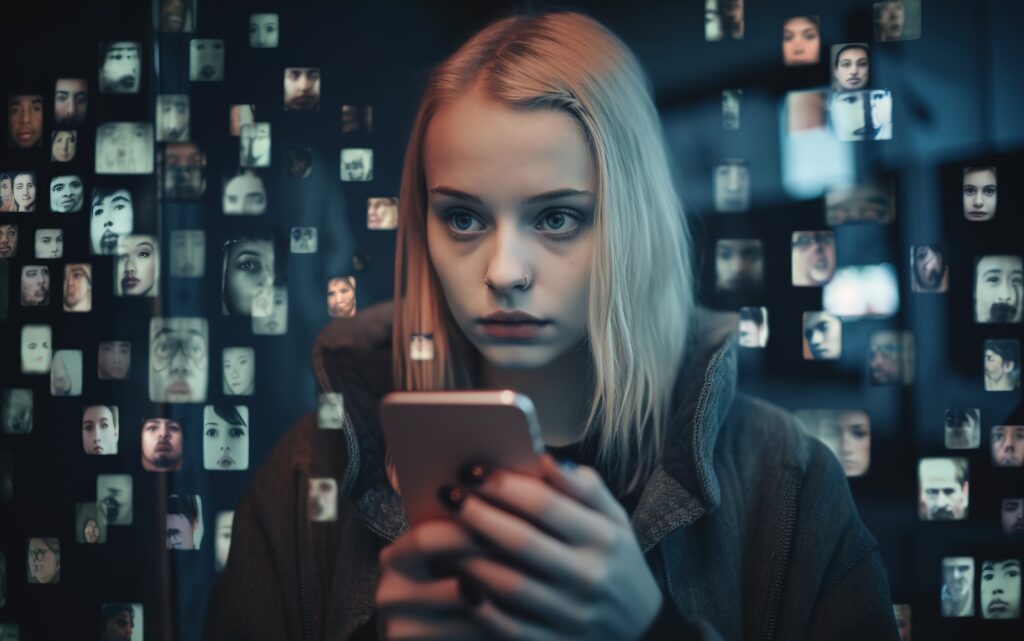Social media is causing the next generation to lose their grip on reality
Nearly 20 years after its advent, Americans are widely aware that social media causes anxiety, depression, and self-esteem and image issues – especially among children.
But what adults don’t…

Nearly 20 years after its advent, Americans are widely aware that social media causes anxiety, depression, and self-esteem and image issues – especially among children.
But what adults don’t fully understand is how profoundly social media may affect youth’s grasp on reality.
On one hand, social media allows its users to distort reality to present an idealized version of their lives.
“The world that we see on Facebook and other social media sites is not a true and real world. It’s a creation of people,” Dr. Ali Jazayeri explains. “As a result, I create a world that is not a true world because I imagine that everybody is happy in that world, except me.”
Children are far more susceptible to such distortions than adults due to their biology.
According to the American Psychological Association (APA), when a child is around 10, the brain shifts to encourage more social behavior, such as seeking attention from peers.
And unlike adults, children don’t have a mature prefrontal cortex to regulate their emotions and actions.
“We know that social media activity is closely tied to the ventral striatum. This region gets a dopamine and oxytocin rush whenever we experience social rewards,” said Mitch Prinstein, APA’s chief science officer.
Traditionally, these “dopamine rushes” are associated with food, exercise and physical intimacy, as well as drug addictions and gambling.
This means that Facebook, Instagram and its compatriots offer children the ability to receive powerful – and potentially dangerous – social rewards 24/7, without having to actually socialize.
But perhaps the greatest problem is that a social media addiction rewires a child’s brain.
The University of North Carolina reported that frequently checking social media made young teens more sensitive to social feedback and altered their brain development over a three-year period.
Further, positive feedback such as “likes” on social media can cause youth to accept dangerous behaviors more readily.
Prinstein explained that adolescent brains generally reject the images of illegal or dangerous actions they see on social media – unless that imagery received lots of “likes.”
“[This suggests] that the ‘likes’ may reduce youths’ inhibition (i.e., perhaps increasing their proclivity) toward dangerous and illegal behavior,” Prinstein concludes.
If this research seems too abstract, look no further than the transgender movement to see how much havoc social media can wreak on a kid’s mind and body.
Many detransitioners – people who once identified as transgender but no longer do – recall being lured into the ideology by social media.
Social media figures such as Dylan Mulvaney or Jeffrey Marsh present idealized, unrealistic images of being transgender or non-binary, and youth are easily duped into believing those images are reality.
As a result, a staggering 5% of 18 to 29-year-olds identify as trans or non-binary, three times the average for Americans of all ages (1.6%).
In other words, social media makes it easy for people to present a lie as reality. And kids will adopt whatever reality gets them the social affirmation their brains crave.
As we enter the age of artificial intelligence, social media users of all ages need to be especially cautious about believing what they read or see on the internet.
And while Photoshop has been around for decades, the ability to alter images and videos or create completely fake ones that pass as real is perhaps the most frightening.
Researchers don’t fully understand how the brain discerns between real and fake images. Some theorize it has a “reality threshold” to determine a picture’s validity.
However, one study concluded that “people have an extremely limited ability to detect and locate manipulations of real-world scenes,” adding that deepfake technology is so sophisticated that “nearly anyone can make a convincing forgery.”
It’s not just the people lying anymore – pictures and videos can lie too.



